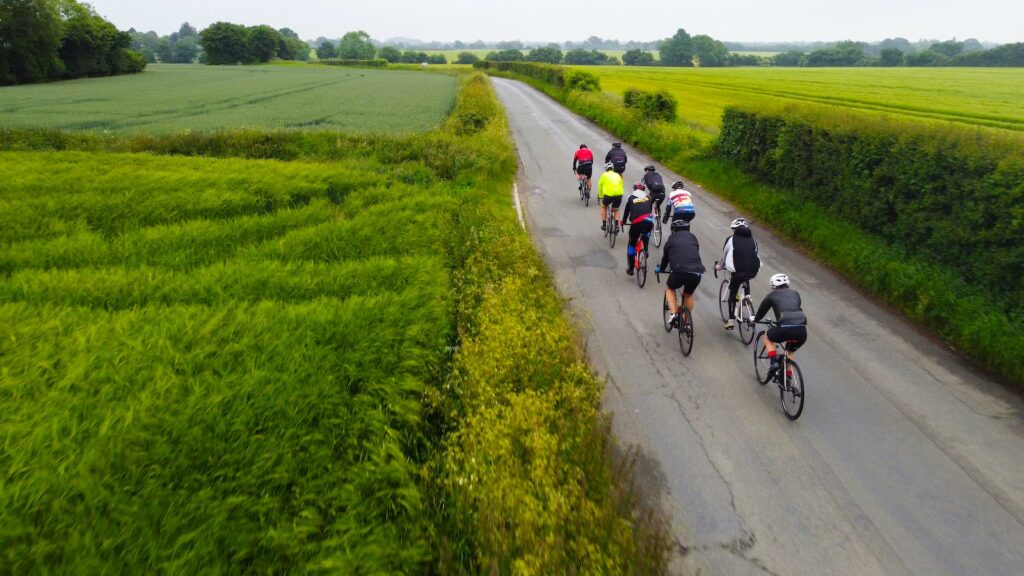Cycling is a popular form of exercise that offers numerous health benefits, such as improved cardiovascular health, increased muscle strength, and reduced stress levels. One of the main reasons people choose cycling as their preferred form of exercise is because it is a low-impact activity that is easy on the joints. In addition, cycling is a great way to burn calories and lose weight.
For those who are looking to burn calories and shed some extra pounds, cycling can be an effective form of exercise. According to research, a person weighing 155 pounds can burn approximately 260 calories by cycling at a moderate pace for 30 minutes. However, the number of calories burned can vary depending on factors such as age, weight, and intensity of the workout. In this article, we will explore the topic of 10 km cycling calories burn and provide information on how many calories can be burned during a 10 km cycling workout.
| Weight | Speed | Terrain | Calories Burned (approx.) |
|---|---|---|---|
| 60 kg | Slow | Flat | 200-250 |
| 60 kg | Moderate | Flat | 280-350 |
| 60 kg | Fast | Flat | 360-450 |
| 60 kg | Slow | Moderate | 240-300 |
| 60 kg | Moderate | Moderate | 340-420 |
| 60 kg | Fast | Moderate | 430-540 |
| 60 kg | Slow | Steep | 280-350 |
| 60 kg | Moderate | Steep | 400-500 |
| 60 kg | Fast | Steep | 510-640 |
| 75 kg | Slow | Flat | 250-310 |
| 75 kg | Moderate | Flat | 350-440 |
| 75 kg | Fast | Flat | 450-560 |
| 75 kg | Slow | Moderate | 300-370 |
| 75 kg | Moderate | Moderate | 420-530 |
| 75 kg | Fast | Moderate | 540-670 |
| 75 kg | Slow | Steep | 350-440 |
| 75 kg | Moderate | Steep | 500-620 |
| 75 kg | Fast | Steep | 640-800 |
| 90 kg | Slow | Flat | 310-380 |
| 90 kg | Moderate | Flat | 440-550 |
| 90 kg | Fast | Flat | 560-700 |
| 90 kg | Slow | Moderate | 370-460 |
| 90 kg | Moderate | Moderate | 530-660 |
| 90 kg | Fast | Moderate | 670-840 |
| 90 kg | Slow | Steep | 440-550 |
| 90 kg | Moderate | Steep | 620-770 |
| 90 kg | Fast | Steep | 800-1000 |
Why Cycling is a Great Way to Burn Calories

Cycling is an excellent way to burn calories and improve overall fitness. It is a low-impact exercise that can be done by people of all ages and fitness levels. Here are some reasons why cycling is a great way to burn calories.
Benefits of Cycling
Cycling is a cardiovascular exercise that raises the heart rate and helps burn calories. It is an excellent way to improve cardiovascular health and endurance. Cycling also helps build muscle strength and tone the legs, glutes, and core muscles. It is a low-impact exercise that is easy on the joints, making it ideal for people with joint pain or arthritis.
Cycling is also a great way to reduce stress and improve mental health. It is a fun and enjoyable activity that can be done alone or with friends. Cycling outdoors can also provide an opportunity to enjoy nature and get some fresh air.
Comparison with Other Exercises
Compared to other exercises, cycling is a low-impact activity that is easy on the joints. Running, for example, can be hard on the knees and ankles, especially for people who are overweight or have joint pain. Cycling also burns more calories than walking, making it a more efficient exercise for weight loss.
According to the American Council on Exercise, a 150-pound person can burn approximately 300-400 calories in 30 minutes of cycling at a moderate pace. This is more than the calories burned during 30 minutes of walking or weight lifting.
Cycling can also be a more convenient exercise than going to the gym. It can be done outdoors or indoors on a stationary bike, making it easy to fit into a busy schedule.
In conclusion, cycling is a great way to burn calories and improve overall fitness. It is a low-impact exercise that can be done by people of all ages and fitness levels. Cycling provides numerous health benefits, including improved cardiovascular health, muscle strength, and mental health.
Factors Affecting Calories Burned While Cycling
Cycling is an excellent way to burn calories and stay in shape. However, the number of calories burned while cycling can vary depending on several factors. In this section, we will discuss the main factors that affect the number of calories burned while cycling.
Intensity
The intensity of cycling is one of the most significant factors that affect the number of calories burned. The more intense the cycling, the more calories you will burn. When cycling at a high intensity, the body will use more energy to maintain the effort, leading to a higher calorie burn.
Weight
Weight is another factor that affects the number of calories burned while cycling. The more a person weighs, the more calories they will burn while cycling. This is because more energy is required to move a heavier body. For example, a person weighing 150 pounds will burn fewer calories than a person weighing 200 pounds cycling for the same amount of time and at the same intensity.
Age
Age is another factor that affects the number of calories burned while cycling. As people age, their metabolism slows down, and they burn fewer calories at rest. This means that older people will burn fewer calories while cycling than younger people. However, regular exercise can help maintain a healthy metabolism and burn more calories.
Gender
Finally, gender is another factor that affects the number of calories burned while cycling. Men tend to burn more calories than women while cycling. This is because men have more muscle mass than women, which requires more energy to maintain. However, this does not mean that women cannot burn a significant number of calories while cycling. The number of calories burned will depend on the individual’s weight, intensity, and duration of cycling.
In conclusion, several factors affect the number of calories burned while cycling. These include intensity, weight, age, and gender. By understanding these factors, individuals can adjust their cycling routine to maximize their calorie burn and achieve their fitness goals.
How to Calculate Calories Burned While Cycling
Cycling is a great way to stay active and burn calories. It is a low-impact exercise that can be done both indoors and outdoors. To determine the number of calories burned while cycling, there are two methods: using a calculator or using a formula.
Using a Calculator
One of the easiest ways to calculate the number of calories burned while cycling is to use a calorie calculator. These calculators take into account your weight, the distance you cycled, and the intensity of your workout. Using a calculator can provide you with a quick estimate of the number of calories burned.
Using a Formula
Another way to calculate the number of calories burned while cycling is to use a formula. The formula takes into account your weight, the distance you cycled, and the time you spent cycling. The formula is:
Calories Burned = (Weight in Kilograms x Distance in Kilometers x 0.05) + (Time in Minutes x 0.83)
For example, if a person weighs 70 kilograms, cycles for 10 kilometers, and spends 30 minutes cycling, the calculation would be:
Calories Burned = (70 x 10 x 0.05) + (30 x 0.83) Calories Burned = 35 + 24.9 Calories Burned = 59.9
Therefore, the person burned approximately 59.9 calories while cycling.
It is important to note that these methods provide estimates and may not be 100% accurate. The number of calories burned can vary based on factors such as age, gender, and fitness level. However, using a calculator or formula can give you a good idea of the number of calories burned during your cycling workout.
In conclusion, calculating the number of calories burned while cycling can be done using a calculator or formula. Both methods provide estimates and can be helpful in tracking your fitness progress.
10 km Cycling Calories Burned: Realistic Expectations
Average Calories Burned for Different Weights
Cycling is a great way to burn calories and improve your fitness. However, the number of calories you burn during a 10 km ride will depend on your weight and the intensity of your ride. On average, a person weighing 155 pounds (70 kg) can expect to burn around 250-350 calories during a 10 km ride. For a person weighing 185 pounds (84 kg), the calorie burn would increase to around 300-420 calories.
Factors that Affect Calories Burned
There are several factors that can affect the number of calories you burn during a 10 km cycling ride. These factors include:
- Intensity: The harder you pedal, the more calories you will burn.
- Terrain: Cycling on hilly terrain will require more effort and result in a higher calorie burn.
- Wind: Cycling against a headwind will also require more effort and result in a higher calorie burn.
- Body weight: As mentioned earlier, a person’s weight will affect the number of calories they burn.
Tips to Burn More Calories While Cycling
If you want to burn more calories during your 10 km cycling ride, there are a few things you can do to increase the intensity of your ride:
- Increase your speed: Pedaling faster will increase your heart rate and calorie burn.
- Use resistance: If you’re cycling on a stationary bike, increase the resistance to make your ride more challenging.
- Add intervals: Alternate between high-intensity sprints and recovery periods to increase your calorie burn.
- Choose hilly terrain: Cycling on hilly terrain will require more effort and result in a higher calorie burn.
In conclusion, cycling is a great way to burn calories and improve your fitness. By understanding the factors that affect calorie burn and implementing a few tips to increase the intensity of your ride, you can realistically expect to burn 250-420 calories during a 10 km cycling ride.
Also read How Much Cycling to Burn 2000 Calories?






